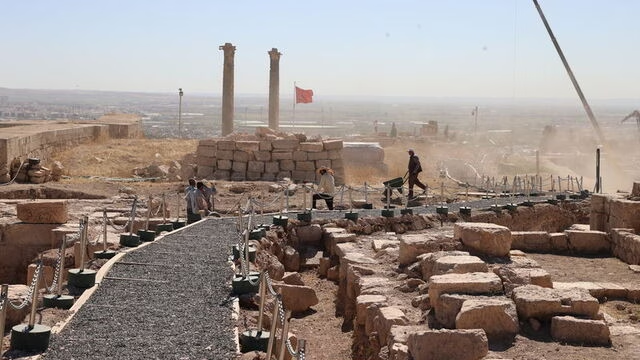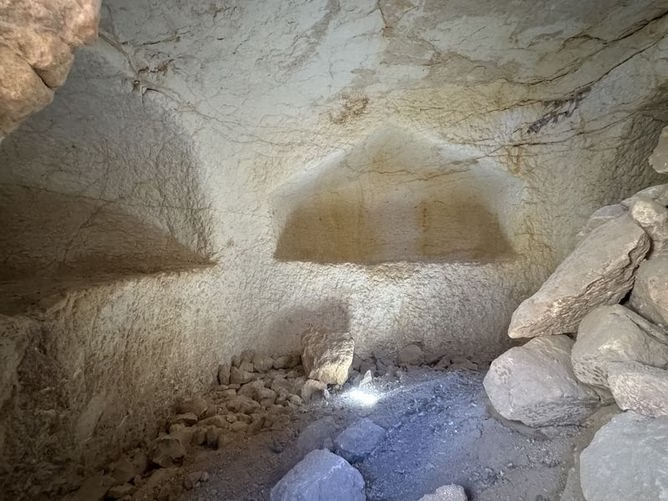A significant archaeological discovery has been made at Urfa Castle, one of the iconic landmarks of Şanlıurfa in southeastern Turkey. Excavations on Dambak Hill, located just south of the sacred Balıklıgöl (Pool of Sacred Fish), have unearthed a rock-cut tomb believed to date back to the Late Antiquity period. Experts suggest that the tomb may be linked to the ancient Kingdom of Osroene—also known in popular tradition as the Abgar Dynasty.
First Rock-Cut Tomb Discovered Inside the Castle
The excavation project has been ongoing since 2020, with the permission and support of the Turkish Ministry of Culture and Tourism. The team is led by Prof. Dr. Gülriz Kozbe of Batman University. For the first time, a rock-cut tomb has been uncovered within the inner section of Urfa Castle, a finding that holds considerable historical significance.
The entrance to the tomb features a circular stone sealing and a short corridor. While the inner chamber has not yet been opened, preliminary observations suggest that the structure includes arched klinai—funerary benches—characteristic of typical rock-cut tombs in the region.

Syriac Inscription Found at the Entrance
One of the most intriguing aspects of the discovery is a partially deciphered inscription near the entrance, believed to be written in Syriac. If fully translated, the inscription could reveal the identity of the tomb’s occupant and provide valuable insights into the historical and cultural context of the time.
Possible Connection to the Kingdom of Osroene: Rewriting History
Based on architectural features and the tomb’s location, archaeologists estimate that the tomb dates from between the 3rd and 8th centuries AD, with a strong possibility that it was built during the 3rd century—within the timeframe of the Osroene Kingdom. This ancient semi-autonomous state existed from the 2nd century BC to the early 3rd century AD, with its capital at Edessa—modern-day Şanlıurfa.
Prof. Kozbe notes that the tomb may have belonged to a member of the Abgar royal family. Further investigation inside the tomb—particularly any mosaics, inscriptions, or grave goods—could confirm this hypothesis and offer unprecedented details about royal burial practices in the region.

Excavations Continue in Four Areas of the Castle
The archaeological project at Urfa Castle is not limited to the rock-cut tomb. Excavations are currently being conducted in four separate areas. So far, a two-story administrative building from the Mamluk period has been uncovered, along with domestic structures from the late Ottoman era. Additionally, in the area known as the “western bastion,” two previously undocumented defensive towers have been discovered.
Unearthing the Deep History of Şanlıurfa
Şanlıurfa, one of the oldest continuously inhabited cities in the world, is home to a rich and layered history. While similar rock-cut tombs have been found in the necropolises of Kızılkoyun, Kale Eteği, and Güney Eteği, this is the first time such a structure has been discovered within the heart of Urfa Castle itself. The find opens up new questions and possibilities about the city’s ancient past and the civilizations that once thrived there.





